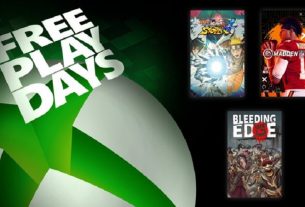Microsoft presented its new augmented reality glasses HoloLens 2 for the first time on Sunday evening at the Mobile World Congress in Barcelona. It should be a big step towards Microsoft’s vision of a computer for the head compared to its predecessor. In the field of augmented reality technology, the Group sees the future of digital work: Through clear lenses, users not only perceive their real environment but also impressions of digital content.
With integrated cameras, the HoloLens recognizes its surroundings, the user’s hands, and hand commands, and fades in work instructions, construction plans or x-ray images directly into the field of view – closely interwoven with reality. While the first version of the 2016 glasses has always been a prototype to some extent due to a very limited field of view and lack of image resolution, the version now shown in Barcelona should be fully fit for demanding work environments such as operating theaters, workshops or factories and already off be pre-ordered for about $ 3500 in spring.
The screen resolution is finer, the field of view is larger, the operation easier and the glasses more comfortable and robust – so robust that the US Army has already placed an order for the development and delivery of up to 100,000 spectacles at the Seattle-based group. The army plans to invest 480 million dollars in a robust version of the HoloLens 2, which shows the US soldiers digital information about their friend and foe directly in the field of vision.
How such a pair of glasses could help soldiers, especially in confusing urban battlefields, is anticipated by modern computer games: hidden map data not only show users their position in the surrounding field, but also the position of their own troops and perceived enemy positions, displayed in the dusty reality. Drone live video or infrared camera images of comrades in their own field of vision could also help soldiers to orientate themselves and effectively attack enemies.
But the Pentagon business is bringing the Seattle-based company into conflict with its employees: In an open letter, a group of Microsoft employees named “Microsoft employees for the good” wrote to Microsoft CEO Satya Nadella, “We are worried that Developed Microsoft weapon technology for the US military so that soldiers can kill more effectively with our tools, “complain the developers in the letter from last week. “We did not start with Microsoft to develop weapons and we need to know what our work is being used for.”
In a first statement, Microsoft points to a statement in the company blog in which warn Microsoft’s top managers to withdraw from the debate on the use of new technologies such as augmented reality or artificial intelligence in the military context. Not only do you want to support the American military as a US corporation, but you also want to actively discuss how to use such technologies responsibly.
Microsoft is not the first company to conflict with its employees over Pentagon contracts. Google employees had also protested openly and even demonstrated on the street when the company wanted to join a Pentagon project called “Maven” to deploy artificial intelligence. Google then withdrew from development. Amazon, on the other hand, has been working for a few months for a billion dollar order to manage Pentagon data in Amazon’s AWS cloud.




